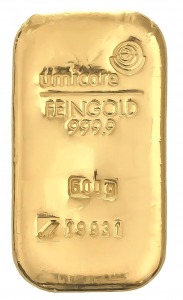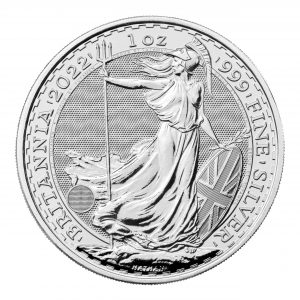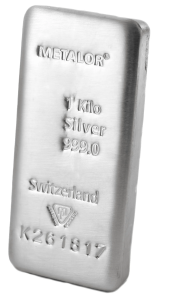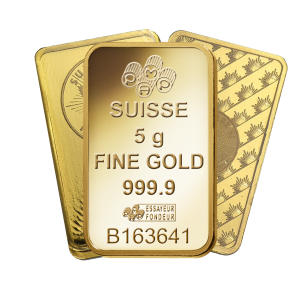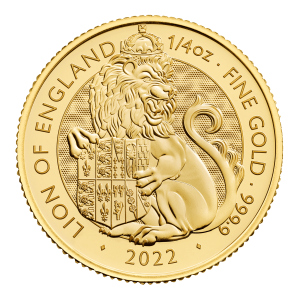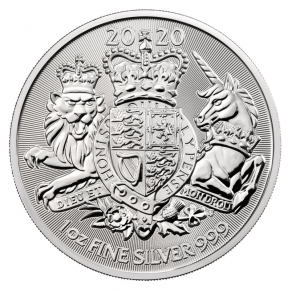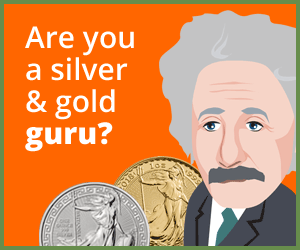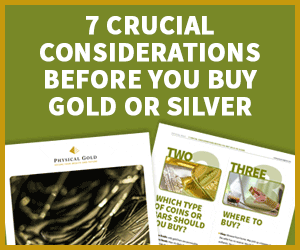Physical gold is a much sought-after asset class that is coveted by investors all over the world. But how do you buy and sell gold if you’re a complete newbie to the gold business? If you’re going to build a gold portfolio, you’re going to need a substantial sum of money to make it happen. So, how do you avoid the common pitfalls that scores of investors fall for? Well, a great start is to discover all the gold trade terminology that is in vogue, so you don’t get caught on the wrong foot.
Our 7 step Cheat Sheet highlights all the important considerations before buying Gold. Download FREE
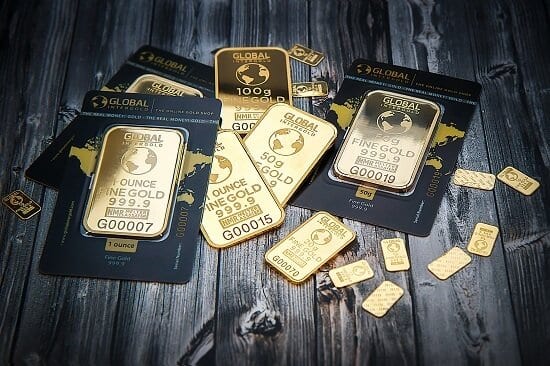
Ascertaining purity is an important step in the gold buying process
Carats (karats)
The purity of gold is measured in karats. It is a measure of the fineness,
or purity of gold for 24 parts, which is considered to be 100%. The standard has been long adopted by the US federal law. 24 karat gold is very difficult to obtain and the label is allowed only for 99.95% purity of gold. Normally 22 karat signifies a purity of 91.66% – 95.83%. Gold jewellery is normally made out of 14k gold which indicates a purity of 58.33%, or 18k (75%).
Troy ounce
The spot prices of gold, as determined by the New York based COMEX exchange sets the price of gold in USD per troy ounce. This simple measure indicates the weight of gold and has nothing to do with the purity.
Authenticity hallmark
Gold jewellery follows an international standard, referred to as ‘hallmark’. These are numbers which indicate a measure of purity. For example, the number 22K916 indicates that the item contains 22k gold with a purity of 91.6%. Similarly, 14K585 means 14k gold with 58.5% purity. In the UK, hallmarking is conducted by the Assay Office, while South East Asia follows the BIS hallmark system.
Gold units of measure
The weight of gold is not measured in troy ounces across the world. Different geographical regions have different ways of measuring gold. While the troy ounce is the accepted unit of measure for gold in the West, parts of South East Asia, including India – the second largest consumer of gold in the world, measure gold differently. Grams or Tolas are the preferred unit of measure in South East Asia. When compared, 1 Tola equals 11.33 grams, while 1 troy ounce = 31.1 grams.

South East Asian nations are some of the world’s largest consumers of physical gold
Gold Colour
When we think of gold, a deep yellow colour comes to mind. However, this is far from the truth, as gold is available in different colours. Apart from the traditional yellow coloured gold, the precious metal is available in white, which can be manufactured using 2 different routes. The first one is an alloy of gold and nickel, which creates a white appearance. However, gold is often used in conjunction with Rhodium, to achieve a polished white exterior and also create a hard surface which is extremely durable. Rose or pink gold, on the other hand, is an alloy of gold and copper, while green gold is made out of gold and silver. Yet another relatively rare colour of gold is purple.
Numismatics
The term refers to the collection of coins. The value of collectable coins (e.g. Gold Sovereigns) differs greatly from the price pertaining to its weight in gold. Demand from collectors and the rarity of the coin determines its value. The authenticity and value of collectible coins are certified by the Numismatics Guaranty Corporation or the Professional Coin Grading Service (PCGS).
Call our team of experts to know more about investing in gold
Investing in gold can be a daunting experience is you’re just starting out. However, you can benefit from speaking our team of experts who can guide you on the best way to invest in gold, particularly bulk purchases. Please call us on 020 7060 9992 or get in touch with us online. We are always willing to help.
Image credits: Michael Steinberg and Gopal Vijayaraghavan
As with all other commodities, buying gold in bulk can have significant price advantages when compared to smaller retail purchases that most investors make. How does this work? After all, gold bullion is traded internationally on spot prices set by the COMEX exchange in New York.
Advantages of buying gold in bulk
It’s true that whether you buy large or small quantities of gold, you still need to buy it at the current spot price. However, there are significant advantages to buying anything in bulk. This is a principle known as economies of scale. Bulk or wholesale buying always favours retailers, as they are able to gain certain price advantages based on the entire deal and then offer discounts to retail customers when selling off their stock.
Download the FREE Cheat Sheet to buying gold now
Here’s the deal….
Cost savings when buying in bulk
In the same way, buying coins and bars in bulk allows the buyer to benefit from significant savings on factors such as admin fees, shipping, insurance, packaging, etc. These are costs that any buyer incurs even if they are buying smaller quantities, however, when these costs are spread over larger volumes, they are much lower per ounce of gold. The cost of insurance greatly reduces per ounce, while a bulk purchase may well attract free shipping. This creates price advantages and the buyer can enjoy greater savings on every shipment.
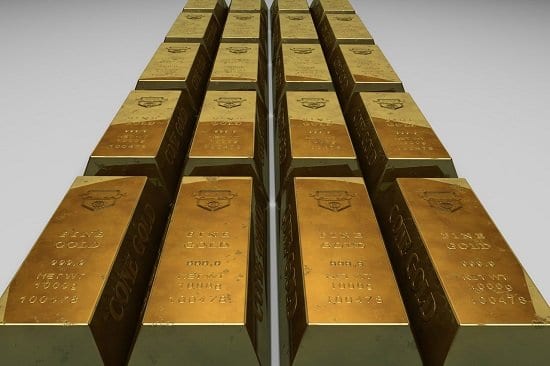
Bulk buying of gold can create advantages in pricing due to economies of scale
Buying gold in bulk
Gold bars are manufactured in the global mints and gold coins are struck there too. So, this can be the first port of call when buying gold in bulk. The Perth Mint or the US Mint would sell gold in bulk, provided the buyer meets certain criteria.
For example, the United States Mint insists that a wholesale customer must be a licensed trader of numismatic coins, precious metals or a registered financial institution. Even if the buyer meets these conditions, the mint would first check the financials of the company, including its standing in the market. Therefore, most individual buyers would not qualify and transactions would be restricted to trade only.
The Perth Mint is, infact, looking for global distributors for their bullion products, but similar conditions apply. The purchasing entity/company needs to show ‘a significant track record of success’ in the precious metals, numismatics or gold bullion investment industry. Another option could be gold retailers who are operating an online store and may be interested in a large volume transaction.
At Physical Gold, our online store offers certain products in bulk and even offer bulk discounts on them. For example, our Metalor 100g VAT free gold bars with a fineness of 999.9 is available for bulk purchases. At the current gold prices, one bar would cost you £5,100, but if you buy in excess of a hundred, the price drops to £5,072. That’s a saving of £28 per bar. So if you were to buy, let’s say, 150 bars, you would save £4,200. You may also like to view our 1oz and 1KG gold bars too.
Similarly, you can order bullion gold coins like Sovereigns or Britannias in quantities of above 500 and avail of discounts.
If you are buying gold in bulk, find out “How much is a gold bar worth?” in our YouTube video.
The website even has a feature by which you can set an alert to buy at a certain price. Once the price falls to that level, an automatic notification will be generated and you can complete your purchase.
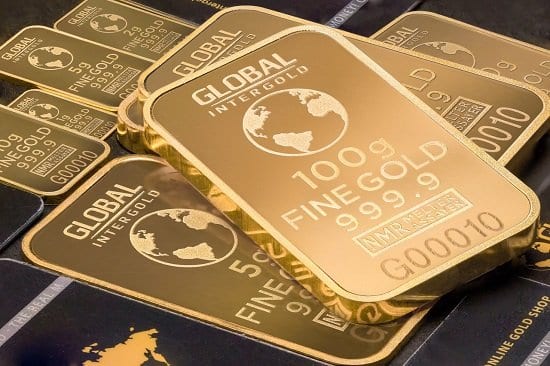
Homework and due diligence goes a long way in ensuring that the gold you buy is genuine
Homework and due diligence
Gold prices change all the time and as a serious buyer of gold, especially if you are interested in buying in bulk, it’s important to be aware of the current prices. Once you have done your homework and identified the right wholesale bullion dealers you want to trade with, you should call them and discuss the spot price and talk about the best deal they can give you on different volumes.
All retailers and wholesalers worth their salt will always
have a bullion expert you can speak with. If the company doesn’t have a number you can call and only wants you to get in touch online, there’ s something fishy and you should steer clear of such dealers. It’s equally important to research the subject of buying gold at your own end and finding out the dos and don’ts. Another great way to check if your dealer is legit is to look up their reviews and ratings online. If customers have been scammed earlier, they’re sure to report it on review sites and social media. If the dealer’s online reputation is mud, steer clear.
Call our bullion experts to find out more about buying in bulk
Our team of bullion experts are always happy to help and we’re just a phone call away. Call us on 020 7060 9992 and speak with our experts. You can also drop us an email and we’ll call you right back. With the right advice, you can make an informed decision about buying gold or buying silver in bulk or ETF and hopefully, your investments will bear fruit in the years to come.
Image credits: Pixabay and Michael Steinberg
Is it a good time to buy gold as an investment?
The phrase we hear more often than any is; “Is now a good time to buy gold?”. I’ll address that in this update.
One good phrase for timing the gold market is; “Its not the timing of the market, but time in the market”. Trying to buy at the bottom and sell at the top may sound like a wise strategy, but in reality it’s impossible and can lead to reducing your returns and security. The fact is that holding gold over the long term has proven over the years to provide a secure storage of wealth and outperform inflation.
But I don’t want to just beat inflation, I want big returns…..
It’s human nature to want to beat inflation by a large margin and gain more substantial returns. So timing in and out of the market plays a role in achieving this.

Add gold to your portfolio
While it’s impossible to predict the future, despite many so-called market experts making gold price predictions, timing is about stacking the odds in your favour. This means you look at market fundamentals and choose to invest in assets which look most likely to perform well.
While allocating your money into different asset classes is always recommended, it’s fair to say that now seems like a good time to buy gold.
Because gold has such a long history, we’re able to see how gold has performed before to help predict how it might perform over the next few years.
The gold price has almost always risen in times of severe economic downturns.
Are we heading into an economic downturn?
Even before the pandemic, markets were overheated and global debt at record highs. Since Covid took hold, Governments around the world have opted to print more fiat money to support their suffering communities in the form of furlough support. Now, nearly 2 years on from the start, there seems to be a lethal cocktail mixing which could lead to the mother of all recessions.

With financial markets, there is always an element of counterparty risk
The following ingredients are now in play;
- Inflation is rising quickly around the world. This is expected when Quantitative Easing programs around the world have been operating at full tilt. Increase the supply of a currency, and it’s value will fall. But we’re also witnessing inflation from broken supply chains. Petrol, building materials, electronic components for cars, food, carbon dioxide, the list goes on. They are all contributing to prices rising at alarming rates. Consequence; Money in the bank is losing value every day. The cost of living is rising. Interest rates will rise soon, increasing mortgage payments for many.
- Tax hikes are being put in place to try to reduce (or more realistically stem) the spiralling debt. This can be in the form of increasing National Insurance, reduced tax free thresholds for taxes like Capital Gains, and reduced welfare. Consequence: Less disposable income for the average person means economic growth will be strangled
- Continued restrictions are dampening trade. Travel limitations and business restrictions are preventing businesses getting back to anywhere near full capacity. High streets are quiet and shops are closing. Furloughing has ended so the safety net is now gone. Consequences: We’re likely to see a spike in companies going under and individuals losing their jobs
- Equity and property markets will likely fall in response to negative growth, poor company performance and less ability to afford to move home.
- Continued uncertainty will dampen consumer and corporate confidence. With further spikes in Covid cases, potential further lockdowns and possible ‘long-Covid’ consequences, companies will limit investment and consumers spend less.
How is gold supply and demand at the moment?
During the height of the pandemic, we saw enquiries increase around 700% year on year. That initial rush has calmed, but demand from new investors now seeking the security and protection gold offers as a safe haven, continues to grow. Overall demand remains above pre-pandemic levels and we expect this to rise as recession kicks in.
Institutional money will also increase gold holdings as many competing asset classes suffer. They will look to move allocations out of stocks, bonds and cash, and into gold.
And gold supply….?
Supply of new coins and bars is managing to keep pace with demand. However, due to very few gold holders wishing to sell, we still see huge shortages in the secondary market. It has now been 2 years since we saw decent amounts of sellers in the markets. With the looming economic difficulties ahead, I can’t envisage this changing anytime soon. Premiums on many gold coins are increasing.
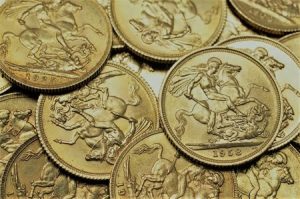
Shortage of pre-owned gold coins
Where is the gold price?
As of the time of writing (November 2021), the gold price is moving upwards. It remains more than 10% below it’s all time high in 2020, but has gained around 8% in the past month, as momentum builds.
This was expected as we moved out of the furlough support and inflation began to take hold. While we can’t predict with certainty where the gold price will move in the short term, it seems that now represents good value.
With all these elements working together and interest rates likely to rise for the first time in a decade, it seems like now is a good time to be buying gold.
[button size=”medium” style=”primary” text=”Shop Tax Free Gold” link=”https://www.physicalgold.com/gold-coins/” target=”_blank”]
Gold or Diamonds?
Investors often wonder about asset class diversification. When it comes to holding physical assets, of course, there are precious metals. But, what about precious stones? The Queen of all precious stones is the diamond and has been immortalised in song for decades. Dame Shirley Bassey sang – ‘Diamonds are Forever’. Jim Croce sang about a big diamond ring in his song, ‘Big Bad Leroy Brown’. Of course, the Beatles sang, “I’ll buy you a diamond ring, my friend …” So, should you be investing in diamonds? Is it likely to be a better investment than gold?
Unless you’re an expert with years of experience, diamond investment poses huge risks that you could pay over the odds. The diamond market is also far less liquid than the gold market, meaning you may not get the price you want when it comes to selling, and it may take some time. Gold is a far more structured marketplace with transparent pricing and dealers who can help guide you. Gains can be large with diamonds, but gold acts more like a market hedge and security.

The Jacob Diamond is the fifth largest diamond in the world and belongs to the Nizam of Hyderabad, India
Ethical issues
The diamond market has had its fair share of negative publicity, owing to ethical issues of exploitation of poor labourers and employment of children in the industry. The ‘blood diamonds’ controversy is still around and imports of diamonds to the UK and the European Union from South Africa and other diamond producing countries is highly regulated. As an investor, you need to be abreast of these issues surrounding the trade. Gold, on the other hand, does not have this kind of controversial social impact. It has been around for thousands of years and currently, the gold market is extremely transparent and structured.
Intrinsic value
Physical gold investments have an intrinsic value that has been around for thousands of years. Gold is perceived as a repository of value and a safe haven during times of economic adversity. Other asset classes do provide quick returns over the short term. However, there is a good degree of volatility associated with these. Gold is seen as a stable, solid precious metal that has intrinsic value and delivers healthy returns over the long-term. Let us consider the global stock markets. During a stock market crash, the value of your investments can fall to zero. But, this can never happen to gold.
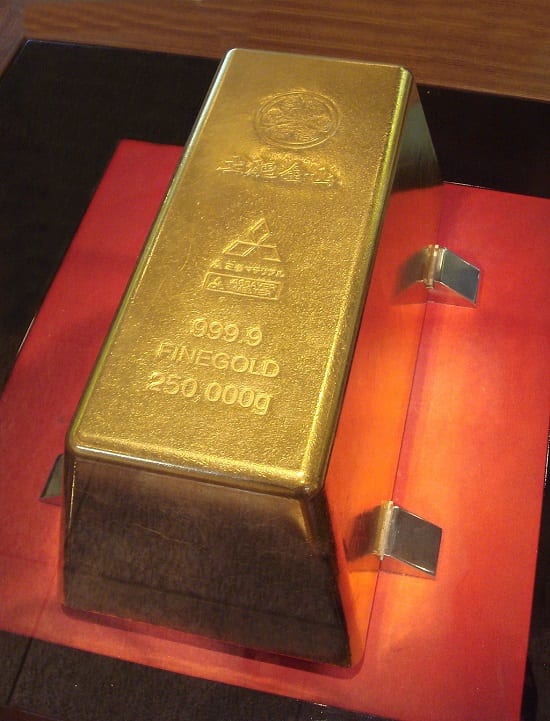
This 250kg gold bar could well be one of the largest in the world
The rising price of gold
As the world stands on the precipice of another major economic crisis, the spot price of gold has already crossed $ 1800 per ounce. So, we are coming close to the peak price of gold, which was achieved at the height of the last recession in 2011. At the time, gold touched an all-time high of $ 1917.90 per ounce. These price rises are driven by investors rushing to hedge their risks and moved their money to gold. As an investor, if you had invested in gold even a year ago, you could already be raking in profits. Of course, gold can provide stability and balance to your portfolio and ensure your investments against adversity. Gold investments can also protect you against market forces like inflation.
Tax benefits
As a UK investor, you can reap good benefits by investing in gold. Gold bars and coins are available in the UK are VAT-free, as they are manufactured using investment-grade gold. Coins that are legal tender in the country also offer the added advantage of the exemption from Capital Gains Tax. Investments in precious stones like diamonds do not carry such benefits.
Contact Physical Gold for more information
If you are wondering how to diversify your investments across asset classes, please call our investment team. A member of our team can assist you with an impartial perspective on the right investments to make and also discussed the merits and demerits of investing in diamonds. Call us today on (020) 7060 9992 or drop us a line via our website.
Image credits: Wikimedia Commons and Wikimedia Commons
What are fractional gold coins?
The term fractional gold refers to coins that have less than one troy ounce of gold in them. Most numismatists will tell you that coin releases undertaken by large mints around the world include sizes that have less than one troy ounce of gold. The one exception may be the world-renowned Sovereign coin which weighs approximately a quarter of an ounce. Being a ‘full’ Sovereign, it tends not to be referred to as fractional.
When we think about it, it seems like an awfully small amount of gold. So, why should anyone want to invest in fractional gold? Are there any advantages or disadvantages? Why is fractional gold considered to be a hot investment category?
In this article, we will discuss the pros and cons related to buying fractional gold.
What type of fractional gold coins are available?
Most major precious metals mints will produce fractional versions of their flagship one ounce gold coin. Examples of well-known fractional coins from around the world are Krugerrands, Maple Leaf coins, Philharmonics, Eagles and Nuggets. Alongside the 1oz gold coin, there will usually be versions made in half ounce, quarter ounce and tenth ounce weights. Some mints even produce tiny 1/20 oz fractional gold coin. Usually, mintage volumes of fractional coins are far lower than the original 1oz version.
For UK investors seeking to be tax efficient and buy UK coins, there are a number of fractional UK gold coins available.
- Gold Britannia 1/2oz, 1/4oz, 1/10oz
- Gold Half Sovereign, Gold Quarter Sovereign
- Gold Queen’s Beasts 1/4oz
- Gold Tudor Beasts 1/4oz
- Gold Lunar 1/4oz, 1/10oz (limited)
Pros of investing in fractional gold
Its worth considering buying fractional gold coins for several reasons. With gold’s popularity with retail investors growing each year, demand for smaller fractional coins is also increasing. Their many benefits appeal to smaller investors and collectors and mints have responded by producing more fractional coin varieties.
Price
Well, the simplest factor that comes to mind is, of course, the price of the gold. Needless to say, larger and heavier coins are way more expensive. If you’re a numismatist or a hobbyist, you may not want to commit very large sums of money while spending on building your collection. Fractional gold coins allow you to build a collection without breaking the bank.
Download our FREE 7 step cheatsheet to buying gold coins here
Ideal and affordable gifts
Buying gold for a loved one as a gift is becoming more popular as it’s a thoughtful gift which is aesthetically appealing and interesting. With one-ounce gold coins costing upwards of £1,600, these coins can prove too expensive for most gift buyers. The fractional gold coin versions offer the ideal affordable gift option for birthdays, Christmas and special events.
Building your own collection
Building your collection from scratch can be an absorbing experience. So, that’s all the more reason why you need to get more bang for the buck. Investing in fractional gold coins will mean that you’re buying your bullion in smaller sizes and can, therefore, acquire more for the same price. If you keep at it, over and over the years, your collection will grow and you could have a formidable gold coin collection.
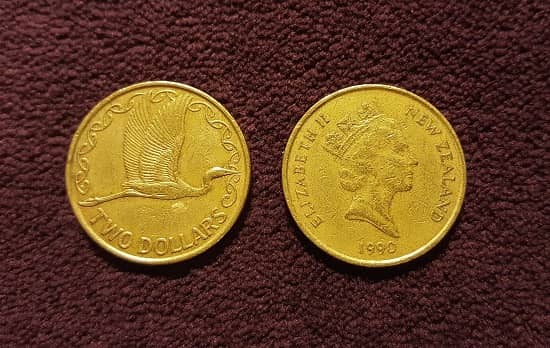
Fractional coins have less than an ounce of gold
Trading in your gold coins
Many collectors frequently sell a few gold coins for a bit of liquidity and cash flow. Fractional gold coins are ideal for this purpose, as it is possible to trade in them without selling off the more expensive coins from your collection. This is why some collectors like to invest in fractional gold coins.
Easy liquidity
Numismatists all over the world are constantly on the lookout for trading opportunities that can help them acquire better coins for their collections. In terms of liquidity, fractional gold coins are great as they offer good bartering opportunities, which is not always possible with gold coins that contain a higher amount of gold, with a larger value.
Cashing in on the higher demand for gold
As the price of gold rises, the value of your fractional gold coins is also likely to increase. As discussed earlier, fractional gold coins are typically cheaper to buy and so, investors looking to make quick returns from the price of gold would buy these coins when the price of gold falls. Later on, as the price rises, they can cash in these coins and get quick returns.
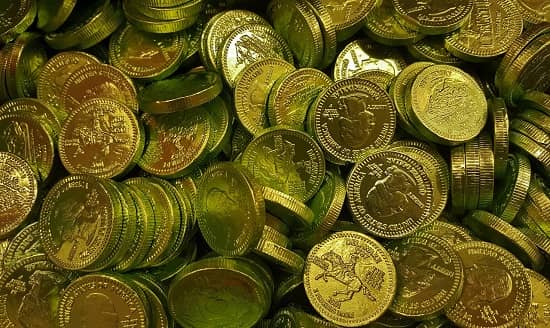
Many investors like to trade in fractional coins due to its price advantage
Hedging against the risk of economic uncertainty
Gold investors are always looking to hedge their risks in the event of a global economic crash. However, liquidity is also an important factor. In the event of a global economic meltdown, most investors would move to gold and the price of gold would rise swiftly, as it did in 2011. At a time like this, if an investor wants to free up some of their capital, fractional coins are ideal as they can be sold to raise funds for smaller purchases. Selling a large amount of gold is not always ideal as the investor may not want to liquidate large amounts of gold, when not required.
Disadvantages of investing in fractional gold coins
Although it might seem that
investing in fractional gold coins is a smart idea for investors, these investments also carry certain risks.
Higher mark-up price
As mints produce large amounts of gold coins, their setup cost for manufacturing these are typically more expensive when it comes to producing gold coins that contain less than an ounce of gold. Usually, 1-ounce gold coins are available at the best price. Therefore, fractional gold coins would always have a higher mark-up price when compared to other gold coins produced by the same mint.
Premium prices
Mints often charge mark-up’s that range between 9 to 15% on fractional gold coins. Many investors see this as an undesirable factor, as the mark-up is not recoverable when trading in the coins.
Talk to our gold experts before you buy fractional gold coins
At Physical Gold, our gold experts have many years of experience in being able to advise investors on products that are ideal for building a gold portfolio, while maximising the opportunity to invest at the best possible capital layout. Call us now on 020 7060 9992 or get in touch with us online to speak with a member of our team. We would always be happy to discuss your investment plans with you and advise you on the best products that suit your investment goals, no matter how small your requirement.
Image credits: Pexels and Pixabay
Many investors who believe in precious metals would look for an alternative to gold at some point in time. Usually, this is silver. Silver is far cheaper than gold and offers precious metal investors an easy entry into the market. However, in recent years, the popularity of platinum has risen. Several jewellery brands manufacture platinum pendants and rings. Many people love the mirror-like finish of platinum and its colour. So, does it make sense to invest in Platinum?
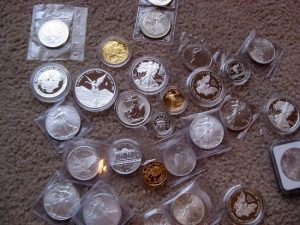
A mix of platinum, gold and silver coins
What is Platinum?
Platinum is a white metal that can be found naturally on our planet. It is rarer than gold and its value and demand have appreciated over the years. Platinum has certain characteristics that are different from gold. The white metal is heavier and harder than gold. Since it is less malleable than gold, it can be used in a pure form when manufacturing bars, coins, or jewellery. Today, platinum jewellery is a lot more expensive than gold jewellery.
Platinum is also virtually scratch-proof. Gold does not have this property. When gold objects are handled roughly, they get damaged and scratched. Due to their hardness, platinum objects are virtually scratch-resistant, but they may develop small bumps and ridges. This ridging of platinum is natural, and many people believe that it lends an antique look to platinum products.
Investing in Platinum
Traditionally platinum has traded at a higher price than gold, but this dynamic has reversed in recent years. You could argue that platinum represents great value in that respect. However, the platinum investment market is far less developed than gold. This means that there’s considerably less choice in products to buy and more importantly, spreads between buying and selling prices are less competitive and therefore wider than with gold investment.

Gold enjoys a more regulated and vibrant global market
The price of Platinum
The other advantage of investing in gold instead of platinum is usually the price point. Historically, platinum has been more expensive than gold. However, with the rush of investors to buy gold to protect their wealth, gold prices are currently trading at US$1,780 per ounce.
In comparison, the current price of platinum is around US$1,214 per ounce. So, in the current scenario, platinum is more than $500 cheaper than gold. Many investors are therefore investing in platinum to take advantage of these price points. Platinum price charts are showing that the white metal was trading below the $800 mark in April last year. Since then, it reached a peak price of US$1,296 per ounce in February this year. So, the price of platinum is also being driven by investor demand.
The Ultimate Insiders Guide to Tax Free Gold Investment. Download the FREE guide here
Advantages of gold over platinum
Gold enjoys greater liquidity than platinum and is a lot easier to buy and sell. The gold markets are vibrant and present in every part of the world. It is a more regulated market, allowing investors to buy and sell with greater transparency. Due to the popularity of platinum, the Royal Mint has issued a platinum Britannia coin. However, gold coins offer greater flexibility, divisibility, and liquidity. Classic gold coins like the gold Sovereign have been around for more than two centuries and carry great prestige and rarity value. This cannot be found in platinum investments.
Talk to Physical Gold about your precious metal investments
Physical Gold is one of the most reputed precious metal dealers in the UK. We can offer you the right advice on which precious metal is to invest in. Get in touch with us on (020) 7060 9992 or contact us online by visiting our website.
Image credits: Eric Golub and Pxhere
It is common knowledge that investors always turned to gold during times of economic turmoil. As a result, gold investments are perceived as a safety net to hedge risks. Our world has seen unprecedented economic adversity in the last two decades. The sub-prime housing market crisis that unfolded in the US during 2008 spiralled into a full-blown economic disaster for the world. At the peak of the crisis, in 2011 gold reached an all-time high crossing the $1900 barrier per ounce. This was clearly a result of scared investors moving their money to gold, spiking the demand for the yellow metal.
Download the Insider’s Guide to Gold Investment. Click here
Similarly, there have been several geopolitical factors that have created adversity in the world. Over the last decade, there has been Brexit, the fallout of the US-China trade war, as well as ballooning government debts across nations of the developed world. Now, we have the COVID 19 global pandemic, which is threatening to have long-term repercussions for the stability of the global economy. Indeed, gold prices have once again risen, crossing the $ 1800 mark. Since everyone seems to be moving towards gold, let’s figure out the essential factors that can affect gold investments.
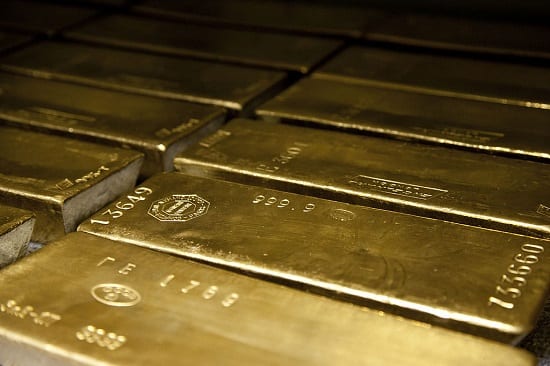
Gold bullion bars are a great investment
Gold investment has many forms
Gold investment can take several forms. The most obvious is to purchase physical gold coins and bars. Gold investment can also be achieved through buying Gold ETFs, gold mining shares, and gold mutual funds. Generally, the aim is for capital appreciation in line with the gold price and to profit from selling the gold at a higher price than when bought. As well as outright profit, motivations for investing in gold can be to provide balance and protection to other assets, and as a store of wealth to beat inflation.
A question of balance
Gold investments, when planned properly can provide much-needed balance to your portfolio and protect you against economic adversity. The term ‘balance’ simply refers to a diversification of your investments across asset classes, resulting in a healthy spread of risks. This means that a sudden collapse of the global stock markets may impact a part of your financial portfolio that has exposure to equities. But your entire portfolio won’t take a hit, especially since precious metals like gold, do not have the same market dynamics as global equities.
Historically, gold has also beaten other monetary factors like rising inflation, which can erode the value of your investments. Volatility in the global currency markets can also impact your portfolio. Gold investments are an excellent choice, simply because you can achieve protection against these negative outcomes.
The philosophy of gold investments
To be a successful investor, you need to select the right type of gold investments, based on your personal objectives. For example, if you are looking to make quick gains by timing the market, electronic gold investments in the form of ETFs could be the right avenue for you. If you are planning to build a strong precious https://www.cialispascherfr24.com/prix-de-cialis-en-pharmacie/ metals portfolio, then you must consider attributes like liquidity, value, divisibility and variety, which can have a significant impact on your portfolio.
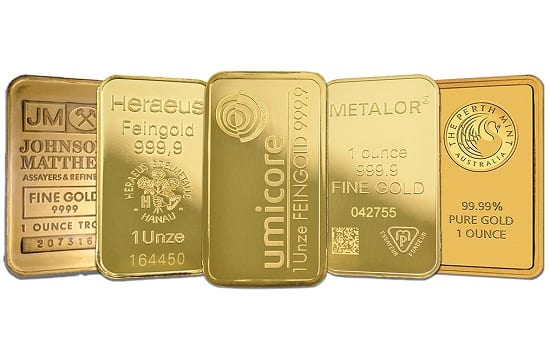
Authentic gold bars always have a manufacturer stamp on the face
Liquidity
This simply means being able to sell off your physical gold holdings quickly, to take advantage of market prices and bring in profits. A smart gold investor will buy popular coins and bars which are easy to sell.
Value and divisibility
These two attributes have a somewhat converse relationship. You can get better value by investing in large bars and coins, due to their lower production costs. However, when you do that you sacrifice divisibility – a term that implies dividing your physical gold holdings into smaller dimensions so that you don’t have to sell large amounts of gold at one time. Variety can play an important role when selecting gold coins, as it increases the attractiveness of your collection.
Other factors
Counterparty risk is an important consideration and you can mitigate this risk by simply investing in gold in a physical form. Tax efficiency is another important consideration when planning your portfolio. All investment-grade gold is VAT free in the UK, but you can become liable for capital gains tax if you invest in coins that are not legal tender in the UK. So, it’s important to choose carefully.
Talk to the gold experts at Physical Gold and make the right choices
Our gold investment experts at Physical Gold can offer you impartial, effective and practical advice when it comes to making the right choices for your gold investments. Call us now on (020) 7060 9992 or connect with our team online.
Image credits: Wikimedia Commons and Wikimedia Commons
- Gold Investment: A Brief History
Gold is perhaps the most popular commodity of all history. Since it was used in early civilizations as a form of status and to honour the gods to being used as currency, gold has been a constant shadow of the evolution of human cultures from the ancient to the modern world.
Gold has been highly valued for its unique and attractive properties since as far back as 4000 BC. The oldest gold treasure in the world dates from 4,600 BC to 4,200 BC and was discovered at a Bulgarian burial site in Varna.
There is no culture or era where gold cannot be seen to have a high value. From ancient Egypt to the Aztecs, China’s many dynasties and the Grecian and Roman treasure hoards gold is synonymous with power and wealth. Both a form of currency as well as a standard of wealth, gold was the basis upon which the global economy as we know it stands today. Without gol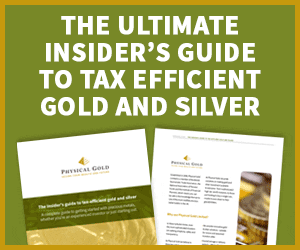
Gold usage as a tool for bartering and trading
Throughout history, gold has often been used as a tool for bartering or trading. It was first used as a form of currency back in 500 BC, when Darius the Great, ruler of the Persian Empire, minted the very first gold coin, known as the “daric,” in order to help fund the expansion of his army into foreign territories. Up until the last century, many countries around the world used gold and silver coins as a form of currency. It wasn’t until the 1930s during the worldwide depression, that countries ceased to use the gold standard.
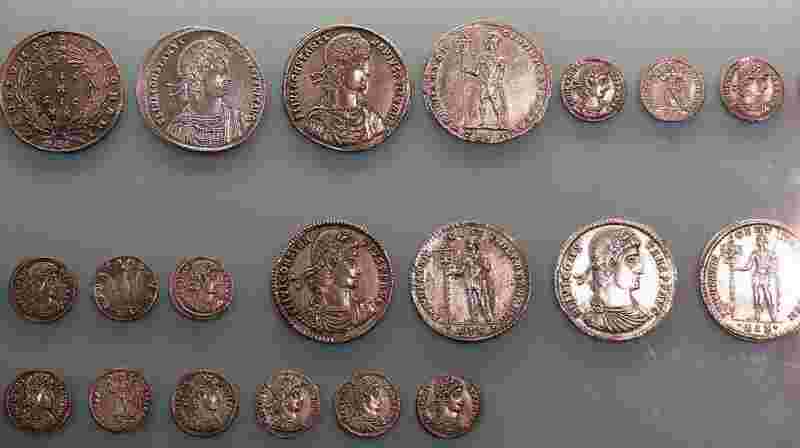
Gold has been a part of our economy since the Ancient World. Examples of Roman Currency via Wikimedia.
Gold and the Dollar….
The United States Congress passed the Mint and Coinage Act in 1792. This act put in place a fixed price of gold with parity to the US Dollar. The act had a far-reaching impact on the modern history of gold as a precious metal. As per the new legislation, gold and silver coins were considered legal tender in the US. Gold, which is today 75 times the price of silver, was only 15 times dearer than silver at the time. The US mint therefore bought and sold silver and gold at a ratio of 15:1. However, the coming of the American Civil War changed that ratio. Since the US was unable to meet its debts using gold and silver, paper currency was introduced for the first time in the US in1862. The paper currency was known as a fiat currency, or one which is not convertible on-demand at the existing fixed rate.
Eventually, in 1873, silver was removed altogether from the US mint’s fixed rate system and a bill called the Coinage Act of 1873 was passed to officialise the removal of silver dollars from the US monetary system.
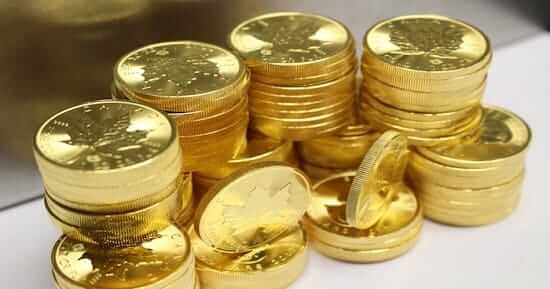
Gold is more than a word – what does it say to you?
The 1800s witnessed a spate of gold rushes, as speculative adventurers rushed off to uninhabitable areas in search of the precious metal, in the hope of becoming millionaires if they struck gold. The notable gold rushes across North America at the time were North Carolina in 1799, San Francisco in 1848 and Klondike in Canada, 1896. Australia too witnessed a number of gold rushes in the latter half of the 19th century from 1850. Infact, the gold rushes helped populate areas of the great Australian outback, which had not been occupied by humans earlier. Today, these places are burgeoning cities and they owe their existence to the coming of the speculators in the 1800s.
The Bretton Woods Agreement
Another important point in the modern history of gold is the Bretton Woods agreement. The two world wars had devastated the international financial markets and at the end of World War II, the global leaders came together to create a gold exchange standard for the world, linking it to the US Dollar. At the end of the war, the US emerged as the strongest nation, both militarily as well as economically. So, the US Dollar was chosen under the Bretton Woods agreement and this made the US extremely powerful on the international markets. The move is one of the most important points for the price of gold and for the US economy, as it paved the way for the US to become a global superpower.
As a commodity and a currency, the history of gold investment is a complex one and is relatively modern. Whilst accumulating wealth (and investing) is not a new human proclivity, the mechanisms for a standard benchmark of gold pricing relative to paper currency only emerged in the last few centuries. Europe was the first continent to implement gold standards at the end of the 19th century with the US following suit after WWII. All nations have since adopted a fiat currency system though most hold gold as central reserve or as commodity money.
After the Second World War
After the second world war, the US dollar became the main currency to hold by other governments as it was the only currency still backed by gold. This continued up until 1973 when America became the last country to cease using the gold standard. The reason for this was that the country required additional funds to pay for the Vietnam war.
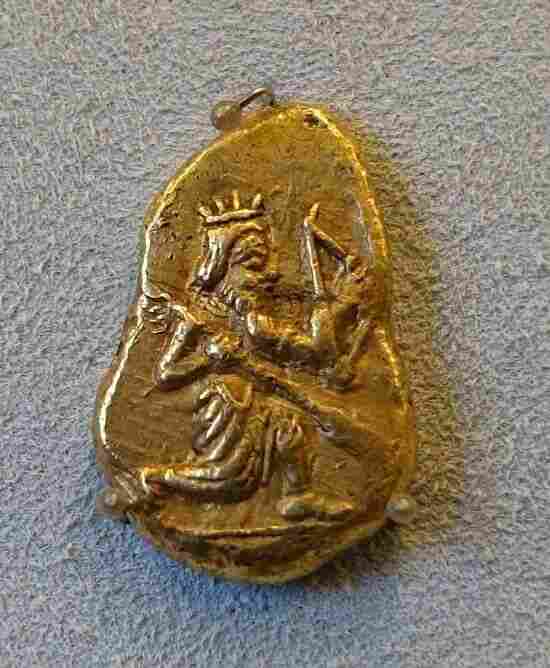
Daric Gold Coin
Gold as an investment
Gold purchased as an investment really only took off after the 1970’s when The United States once again made it legal to own and trade in physical gold. Up until 1975, the Gold Reserve Act Of 1934 had made the possession of gold illegal.
Gold is a popular investment among a diverse range of investors who wish to diversify their portfolio outside of traditional stocks and shares and in doing so reduce their risk. Over a long period of time gold has consistently held its value against other asset classes and in the last 45 years has been shown to have outperformed stocks and shares.
What’s the deal today?
Today gold is typically purchased as a hedge against inflation and its price has often been known to rise during times of economic crisis. The main reason for this is that during times of economic uncertainty, people often turn to tangible assets in which to store their wealth in case of a market crash. A great example of this occurred after the 2009 financial crisis when the price of gold rose to its highest peak in history.
Due to ever-increasing geopolitical tensions and a growing mistrust of the current financial system, the popularity of gold investments has grown significantly in the past two decades. As Britain moves towards an uncertain future outside of the European Union, it is likely that investor demand for physical gold will continue to increase.
Introduction of the Krugerrand
The South African Krugerrand, launched in 1967, was the very first coin designed specifically for investment purposes. At the time South Africa was the biggest gold producer in the world and the Krugerrand was the perfect way to capitalize on this. For the very first time, it offered investors a vehicle for the private ownership of gold and at one time the Krugerrand accounted for nearly 90% of the global gold coin market. Since its inception, many other countries have introduced their own version of the Krugerrand including Britain’s very own Britannia coin.

1 oz Gold Krugerrand
Influence of the World Gold Council
The World Gold Council has been instrumental in changing the way people perceive gold as both an investment and a commodity. Founded in 1878, the WGC has helped to promote demand for gold all over the world. Today the WGC continues to have considerable influence on the gold investment market and launched the very first gold ETF in 2004. For more information on the World Gold Council, you can read our article on them here.
Popular forms of Gold Investment
Gold is one of the most versatile assets available on the market and there are many different types of gold investments. Some of the most popular of which include:
Collectors’ Coins
Collector’s coins are popular with a wide variety of investors as they offer numismatic value as well as just their material value. If you have access to expert advice, or even if you have sufficient knowledge in this area yourself, then historic collectors’ coins can provide excellent returns.
Gold Bullion Coins
Gold bullion coins are usually issued by countries or commercial businesses. Popular examples include the Britannia, the Sovereign, the South African Krugerrand and the American gold eagle. These coins are generally for investment purposes only and are priced based on the weight and purity of the gold content that’s been used.
Gold Bullion Bars
Gold bars are one of the easiest ways to invest in solid gold.
You can buy them in weights of one gram, one ounce, ten ounces, and one kilo. They typically have a purity rating of 999.9.
Gold ETF’s
Gold ETFs have been around for less than 15 years, however, since the launch of the very first gold ETF back in 2004 they have become one of the most popular forms of gold investment, allowing investors to profit from changes in the price of gold without having to own any physical gold themselves.
Gold Mining Company Stocks
Some of the hottest stocks right now are issued by gold mining and exploration companies. Part-ownership in these companies is becoming an increasingly common investment.
Gold investment through Physical Gold
Physical Gold offers a wide range of gold based investments including vat free gold bars (such as 100g, 1oz and 1 kilo), tax-free coins and much much more. To speak to one of our experienced brokers or to find out more information on any of our product ranges please contact us on 020 7060 9992.


